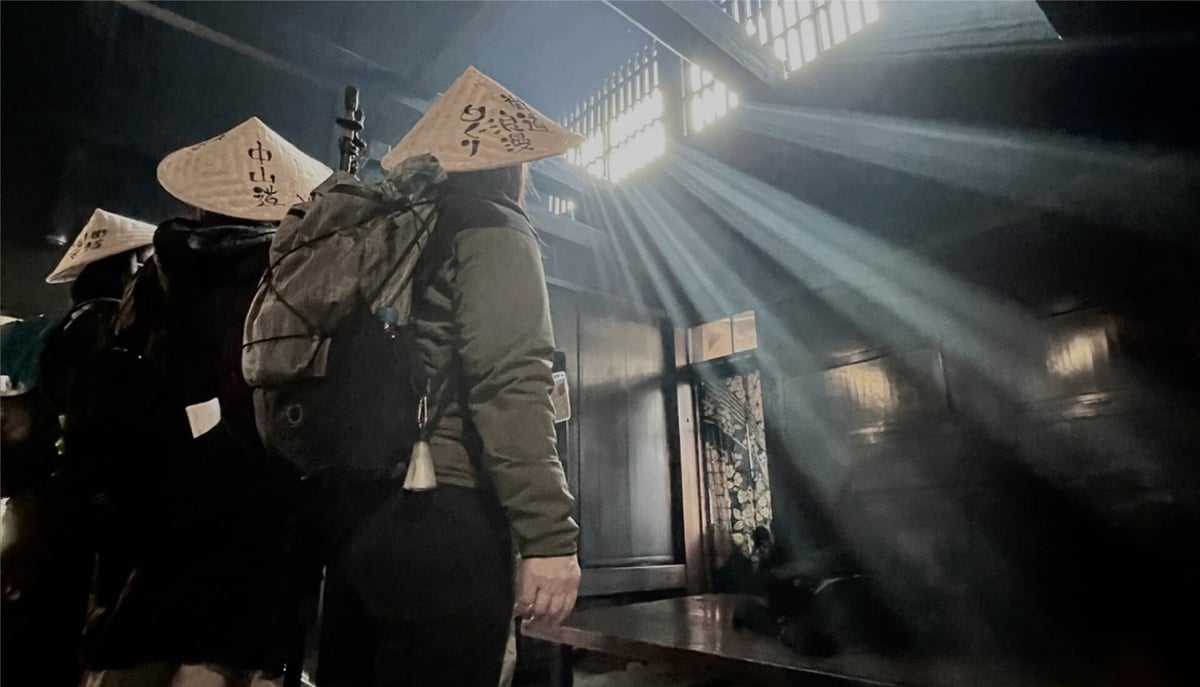
Many visitors to Nagano walk the old Nakasendo samurai trail along the Kiso Valley and explore the well-preserved post-towns dotting the way. But it is only after the hordes of day-trippers have departed and the lanterns start to light up at dusk that the full Edo-era aura emerges. Accommodation can be hard to find, though. So here are a range of suggestions, from exclusive resorts to century-old inns where the walls are literally paper-thin.
Where to Stay While Traveling the Nakasendo
Narai-juku

Known as “Narai of a Thousand Houses”, this is the largest post town in the Kiso Valley and marks the midway point between old Edo and Kyoto. Options for accommodation include the upscale Byaku, recently transformed from a sake brewery into a luxurious inn; and the traditional Iseya, whose main building dates back to 1818.
Byaku
 ©NOSIGNER
©NOSIGNER
Consisting of sixteen guest rooms each with a unique layout, Byaku features a seasonal eight-course dinner that reflects the regional cuisine, perfect for pairing with local sake. The dining room has windows looking into the adjacent old sake brewery works, giving a historical ambience to the meal. Most of the guest rooms have a private soaking tub and all have toilets.
Website: Byaku's official website (English)
Iseya

Go back in time by staying in this late Edo period inn. Iseya offers five rooms in the original building with four additional rooms located in the newer Annex. Toilets are shared and private soaking tubs are available. Meals feature the local Kiso cuisine.
Website: Iseya's official website (English)
Kiso Fukushima

The Uenodan neighborhood retains its historical post town atmosphere and boasts a number of eateries and drinking establishments for travelers who desire a bit of night life. Nearby are a trio of traditional inns all with hot spring baths.
Tsutaya

Located across the street from the venerable Nanawarai Sake Brewery, Onyado Tsutaya is a medium-sized ryokan (Japanese-style inn) with rooms ranging from basic (futons spread out on the tatami mat floor) to deluxe (beds and a private onsen bath). All rooms have a private toilet. Formal kaiseki-style dinners are highly recommended, as are the tattoo-friendly common onsen baths, divided into men’s and women’s.
Website: Tsutaya's official website (English)
Iwaya

With a history dating back 350 years, Kisoji no Yado Iwaya is the oldest inn on the Kiso section of the Nakasendo. Royalty and literary greats have stayed here. The guest rooms are in traditional Japanese style, each with a private toilet and bath. The kaiseki-style dinner and common onsen baths (divided into men’s and women’s) are not to be missed.
Website: Iwaya's official website (English)
Urara Tsutaya

Featuring onsen baths with a picturesque view, Yamamizuki Urara Tsutaya provides a calm, relaxing atmosphere with its warm wooden construction true to the Kiso area’s heritage as a lumber producing region. Urara offers a mix of Western and traditional Japanese-style rooms, some with a private outdoor bath and most with a private toilet. The dinner menu changes with the seasons.
Website: Urara's official website (English)
Tsumago

Many fans of Japan’s feudal history follow the steps of the samurai by walking the Nakasendo trail from Magome crossing over to this post-town. Only those fortunate enough to spend the night in Tsumago will see the post-town at dusk, when the lanterns start to cast their glow on the centuries-old wooden townscape. Most of the businesses close early, leaving a still, peaceful ambience in the evening. Two local inns that have been hosting travelers for hundreds of years continue to provide lodging today for the lucky few who chose to stay overnight in Tsumago.
Daikichi

Onyado Daikichi is a traditional inn with a few modern updates, such as Western-style toilets in the halls. Rooms are modest in size (4.5 or 6-tatami mat size), and guests are encouraged to send any large suitcases ahead to their next destination. A hinoki (local cypress wood) soaking bath can be used privately, and the meals are carefully prepared using local ingredients.
Website: Daikichi's official website
Matsushiroya
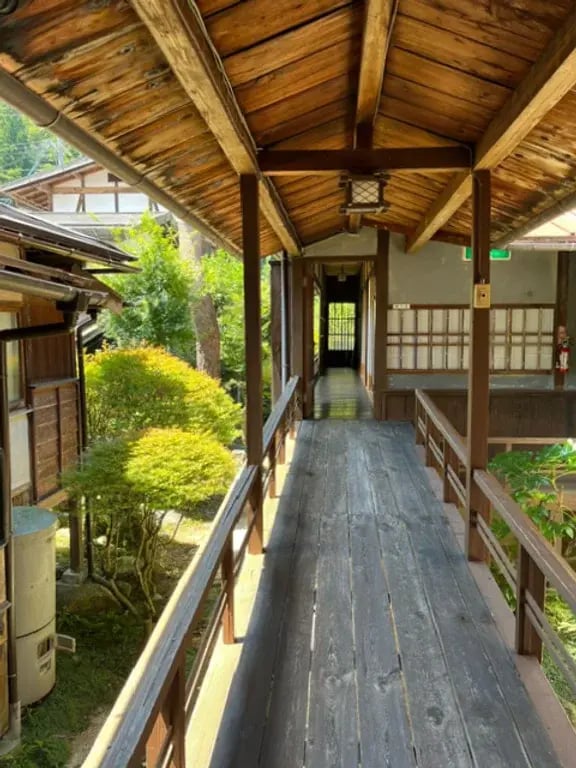
Time has stood still for over 200 years at Matsushiroya Ryokan. There are no clocks or television sets in the guest rooms so as to allow time to proceed at a slower, more serene pace. The rooms are haven’t changed much since Tsumago’s post-town days—bare-bones with simple paper sliding doors in between. Toilets and bathing facilities are down the hall. Who would want to stay at such an inconvenient place? Exactly the same type of person who would skip the bus to walk from Magome to Tsumago as the samurai did. At Matsushiroya, the change in seasons can be felt through the many gardens throughout the inn, and the cuisine features specialties such as locally raised river fish.
Website: Matsushiroya's official website (Japanese)
Tsumago Surrounds
The post-town of Tsumago itself has limited options for lodging. Fortunately, there are a couple of accommodations nearby that offer free shuttle service to/from Tsumago: the ultra-exclusive Zenagi and Taoya Kisoji. In addition, a handful of inns are located in Otsumago, 20 minutes by bus from Tsumago’s Nagiso Station.
Zenagi

How exclusive is Zenagi? Only one group can stay at a time. And included in the stay package are specially catered gourmet meals and exotic excursions. Care to sit down with a master lacquerware craftsman? Zenagi can arrange that! See also “Where to Stay in Nagano for Unique Experiences” page.
Website: Zenagi's official website (English)
Taoya Kisoji

An onsen resort hotel owned by the Oedo Onsen Group, Taoya Kisoji provides ultimate comfort. The expansive outdoor onsen bath is particularly popular. For people who prefer modern conveniences, this hotel has a lot to offer.
Website: Taoya's official website (Japanese)
Otsumago inns: Hanaya, Maruya, Koshinzuka
Tucked away in the relatively undiscovered post town of Otsumago, a handful of simple inns have been providing lodging for travelers along the “Samurai Road” (Nakasendo) for centuries. They have Japanese-style guest rooms with shared toilet and bathing facilities.
Hanaya has been in business for eight generations and has private shower stalls in addition to the soaking baths. At Maruya, guests can enjoy an old-fashioned hearth as well as a restored earthen-walled storehouse. Food is prepared by the proprietress with the menu based on what is in season that day. With a capacity of up to just 13 guests, Koshinzuka is the smallest of the three. The owners grow their own rice and have been known to serenade their guests with traditional songs as everyone gathers around the hearth at night.
Hanaya
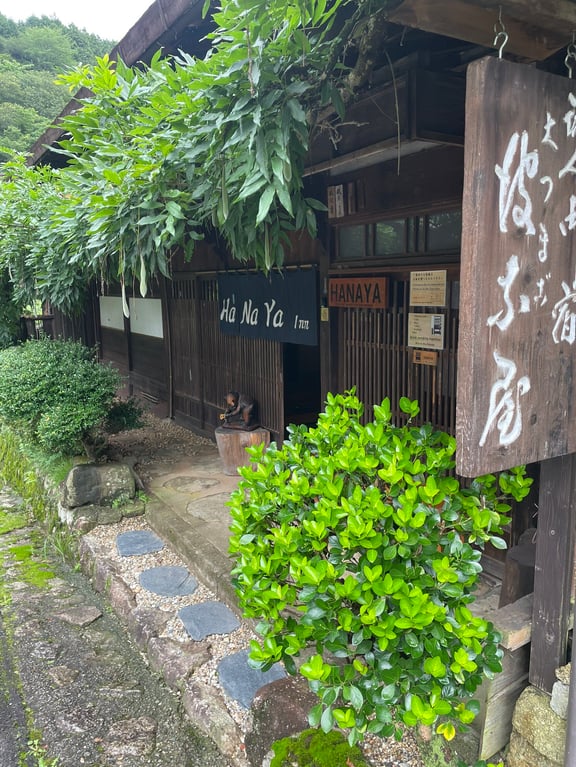
Website: Hanaya's official website (Japanese)
Maruya

Website: Maruya's official website (English)
Koshinzuka

Website: Koshinzuka's official website (English)
Summary
Traveling the old Nakasendo samurai road through the Kiso Valley makes for a memorable experience, but actually spending the night in one of the well-preserved inns or nearby hotels can make your time slip to the Edo Period complete. Hopefully this list will be useful in finding accommodation in Kiso that fits your style. Some of the inns are rather analog and require reservation requests to be sent via e-mail. But that and other inconveniences like paper-thin walls are no doubt worth putting up with in order to experience staying at an authentic traveler’s inn on the Samurai Road.

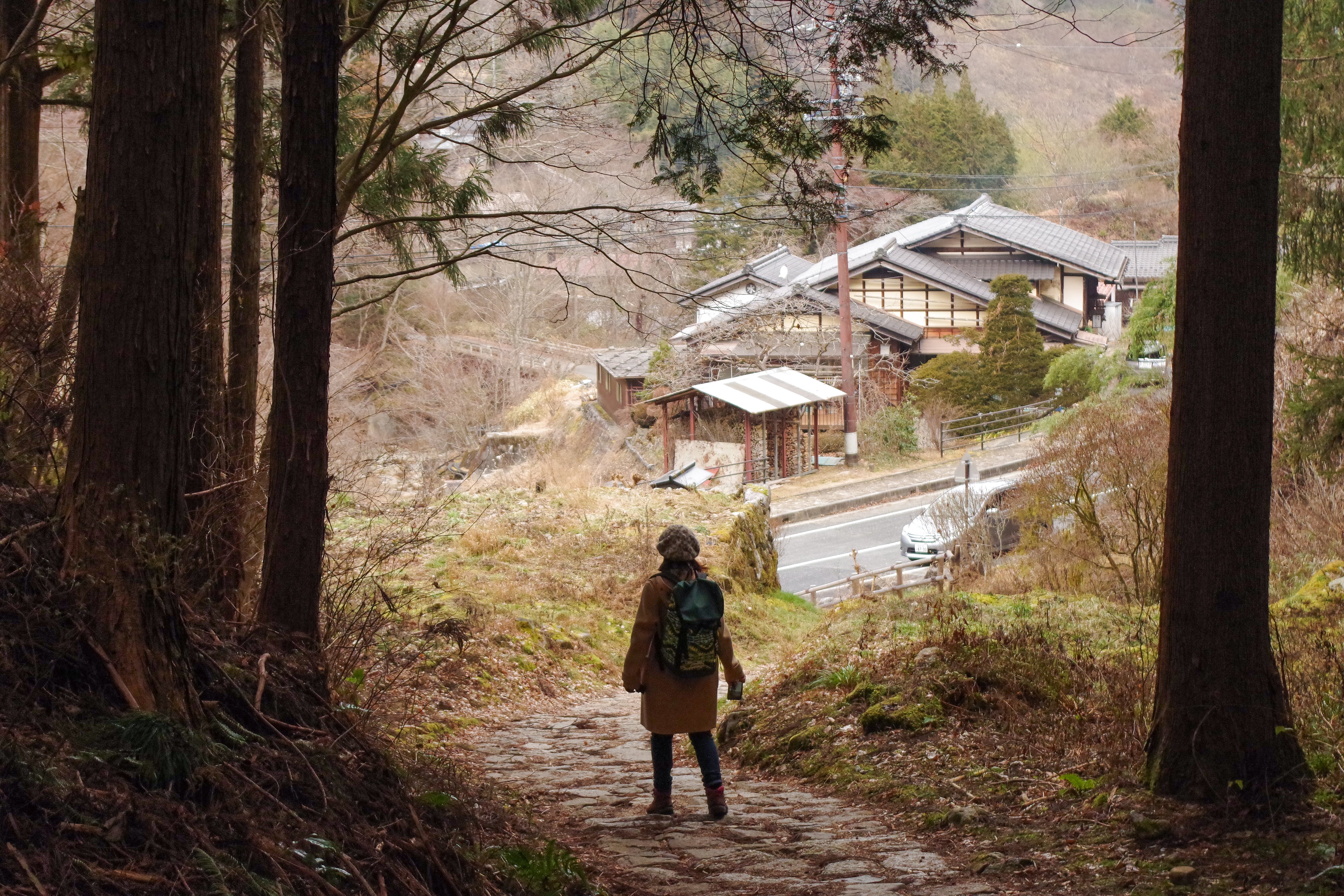
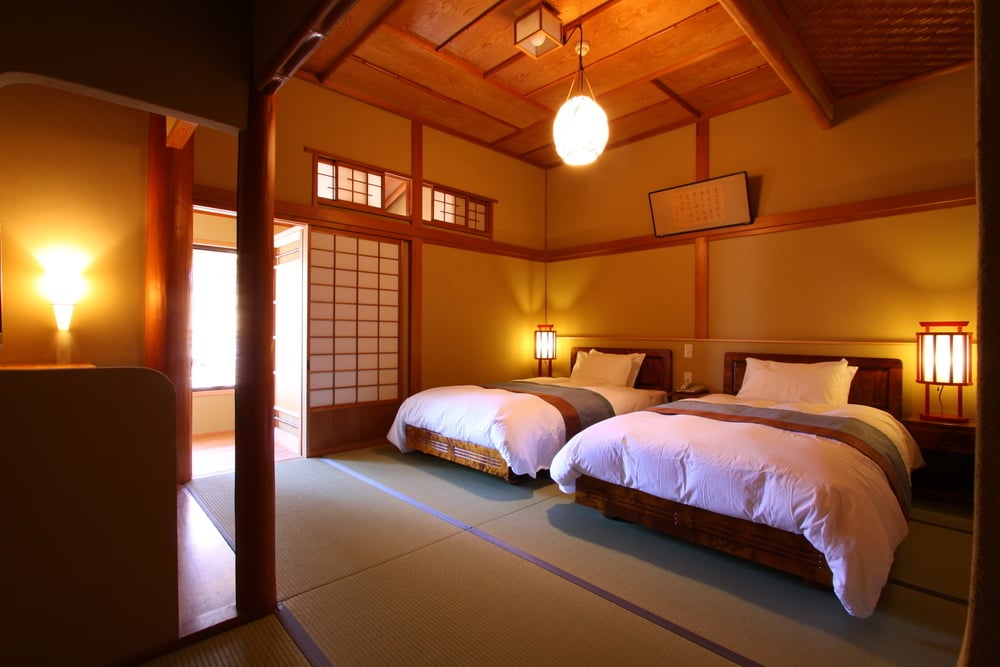
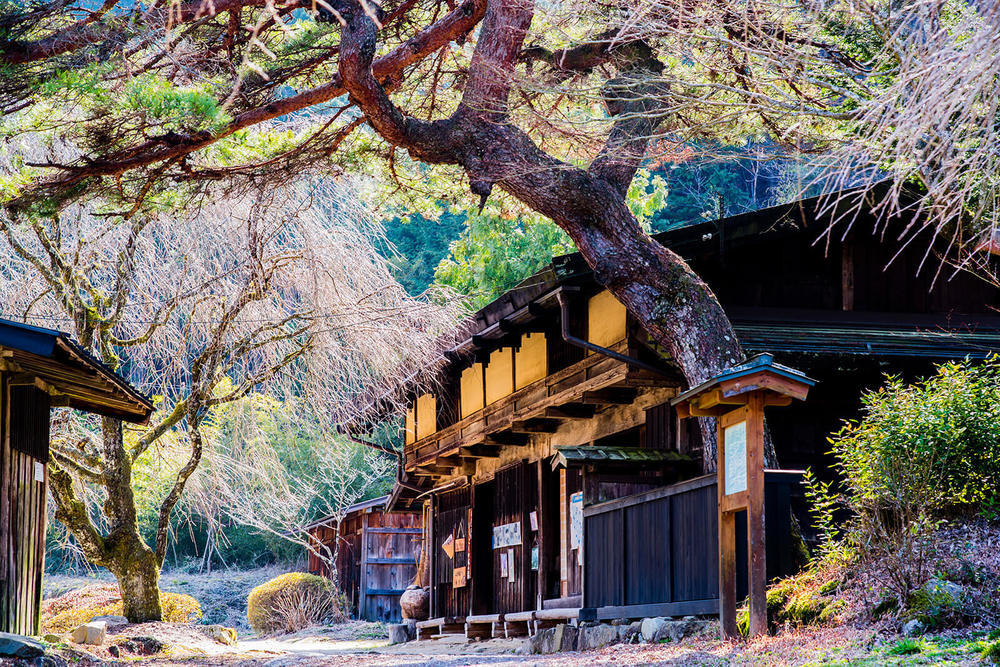
![The Nakasendo Trail [Guide]](https://www.go-nagano.net/hubfs/blog_assets/nakasendo_guide/tsumago-winter.jpg)